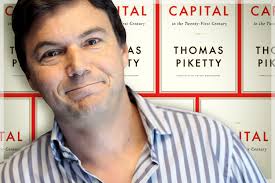What is behind the financial earthquake
19/08/2007
Thursday, August 2, 2007
During 2007 the global financial markets broke historical records. The
Dow Jones index, which brings together the main stocks in the US,
broke the 14,000 point barrier and up to last week had accumulated a
rise of 27% in the last 12 months. However, since last Tuesday the
outlook has changed abruptly, and US stocks finished the worst month
in three years. The S&P index fell 1.3% on July 31, losing 3.2% during
July, its worst monthly result since July 2004. These losses on Wall
Street were accompanied by losses in the main stock exchanges of the
world. The nervousness of the markets spread to Latin America.
Argentina was one of the most affected. Last Wednesday the dollar
relative to the peso reached 3.20 pesos (and afterwards fell to 3.16
pesos) and the sales of bonds for Argentina’s foreign debt (among
other assets) grew in the framework of a flight to quality from
"emerging markets" to more secure markets, like US Treasury bonds. The
inter-bank interest rate in Argentina, that was 12% on Wednesday,
reached 28% on Friday. It does not appear that tensions in the
markets are going to stop, at least not for now.
What is happening in the world markets?
We are clearly at the beginning of an international financial crisis.
The first symptoms became apparent because of difficulties in the
mortgage market, especially mortgages of lower credit quality or
subprime (for loan recipients with bad credit histories), through
which a high percentage or almost the whole value of housing was
financed. The delay [with which] this credit [was repaid] increased
significantly as the debtors discovered that their debts were greater
than the market value of their property. In February and March of this
year there was a series of bankruptcies by firms in this segment that
began to increase the nervousness in the markets. But everyone was
saying that it was a localized problem, stock markets continued going
up and the credit market continued its expansion, even reaching new
records.
But a series of bad news items changed the mood of the markets. The
first blow was the existence of problems in two hedge funds belonging
to Bear Stearns, the investment bank in New York, which was strongly
exposed in the subprime sector. And in the last ten days there was a
leap. First Countrywide, one of the biggest mortgage banks, announced
bad results in their operations. This was an indication that the
problem of mortgage credit was affecting the prime mortgage sector,
that is, the first line, where the rate of unrepaid loans increased.
But the most significant thing is the fact that the difficulties in
the credit market are moving to the rest of the financial system,
provoking a rationing of credit and an increase in its price in other
sectors beyond real estate. As banks restrict credit and become more
demanding in granting it, the cost of credit grows. One should bear in
mind that lax conditions for access to credit have until now given a
big impetus to the stocks of companies of the main stock markets,
through financing operation of leveraged (1) buyouts, mergers,
acquisitions and stock buy backs.
With a growing cost of indebtedness, financial firms and agents find
themselves forced to review their investment decisions and plans.
During the month of July, a large number of big credits intended for
financing purchases, mergers and acquisitions or issuing obligations
and stocks, were suspended. Among those who lost out are top-drawer
international firms from several economic sectors. For example, last
week saw the suspension of the debt auctions of mergers of big
corporations, like Daimler Chrysler, that is financing the sale of the
US subsidiary of this automotive firm to Cerberus, a US hedge fund, or
the failure of the banks to sell 5 billion pounds of senior loans of
Alliance Boot, a chain of pharmacies, the biggest leveraging operation
in the United Kingdom. And this is also the case of Cadbury, that on
Friday suspended its operations of selling loans for 7 billion dollars
for the sale of all its brands of beverages in the US.
Not accidentally, together with big US construction firms, those who
find themselves most affected are the big banks, like JP Morgan Chase,
the Bank of America and Citigroup. These banks, together with the big
investment banks like Goldman Sachs, Morgan Stanley or Bear Stearns,
have accumulated some 300 billion dollars in committed loans in
leveraged mergers (2) that it was hoping to sell this year.
This entire situation has caused a greater aversion to risk among
investors and growing volatility. There exists a situation in which
investors are withdrawing money from funds for fear of losses, the
funds are discovering that the bonds are not worth what they supposed,
and that selling them fails to cover the withdrawal of deposits by
their investors. In this way, we are going from an abundance of
available money, or "liquidity" to an "illiquidity" [scarcity], where
it is more and more difficult to get money to buy the bonds that the
funds want to sell. For this reason, we say that we are at the
beginning of a financial crisis.
End of the "vigorous cycle" of the world economy in recent years?
It is obvious that there is a turning point for the vigorous growth
that the world economy has enjoyed in recent years. The cycle has
ended, that began in the middle of 2002, when the US Federal Reserve
savagely reduced the interest rate (which reached 1%, the lowest rate
of the last 40 or 50 years) and began to issue money massively. These
measures, together with the passage from a fiscal surplus to a
deficit, had the aim of preventing the recession crisis of the US
economy (and, in this way, of the world economy) from becoming a
depression, or even a serious recession after the collapse of the
so-called "internet bubble" and of the "new economy" at the end of the
1990s, that saw the biggest corporate bankruptcies in US history, as
was the case with Enron or Worldcom. This excessive offering of easy
money, of easy credit, that spread everywhere through the extended
tentacles of the international financial system, was combined with the
large-scale opening of the Chinese economy with China’s entering the
World Trade Organization. This gave rise to what we could call a
"successful symbiosis." The US acted as the final consumer, the big
market where the whole world wanted to sell, and China developed as
the big world manufacturing workshop.
This "successful combination"
This "successful combination" relaunched the entire world economy.
Thus, imperialist countries that suffered years of stagnation like
Japan, benefited from the drive of the Chinese market. In Europe,
where there is big growth, not only the Spanish economy, driven by
construction and the service sector, has grown, but Germany, until
recently called the "sick country" of Europe, began to grow
vigorously, with strong exports, not only in the Euro zone, but also
to the "emerging countries," that need high-quality machinery. The
growth of the world economy, in its turn, strengthens the price of raw
materials, which drives the economy of the great majority of
semi-colonial countries, including those of Africa. Latin America is
experiencing its fourth consecutive year of expansion, thanks to
robust prices of raw materials from agriculture, energy and mining.
During 2006, growth reached 5%, a figure that has not been seen for
years, if we take into account that 1980 and 2003, average expansion
barely reached a mediocre 2%.
It is thanks to this extraordinarily favorable international context
that the economy of Argentina was able to avoid the continuation of
the depression after the economic crash and debt payment default of
2001-2002 and to grow at "Chinese" rates for several years. It is also
the fundamental reason for the relative stability of the regimes of
South America, which went through very pronounced mass uprisings at
the beginning of the decade, as in Argentina, Bolivia or Ecuador, and
have been able to find stability in these years with new governments,
strongly aided by this favorable international context.
Now we are witnessing a turning point, more pronounced than the brief
correction made in February and March of this year by the fall of the
Chinese stock markets, as indicated by the higher levels of aversion
to risk and volatility. It is still expected that world [market]
growth will be high; in addition, the big financial institutions are
well capitalized after the recent record profits. But the spread of
hyper-indebtedness and hyper-speculation could have reached
exaggerated levels, and these are the factors that make the markets
nervous. Furthermore one must take into account the effects that the
difficulties in the credit market will cause in the real economy,
especially in the US, on the fate of which the health of the world
economy still depends in large measure.
– Notes
1 A purchase financed by someone else.
2 These bonds supported by debt are called "collateralized debt
obligations" or CDOs.
Translation by Yosef M.








